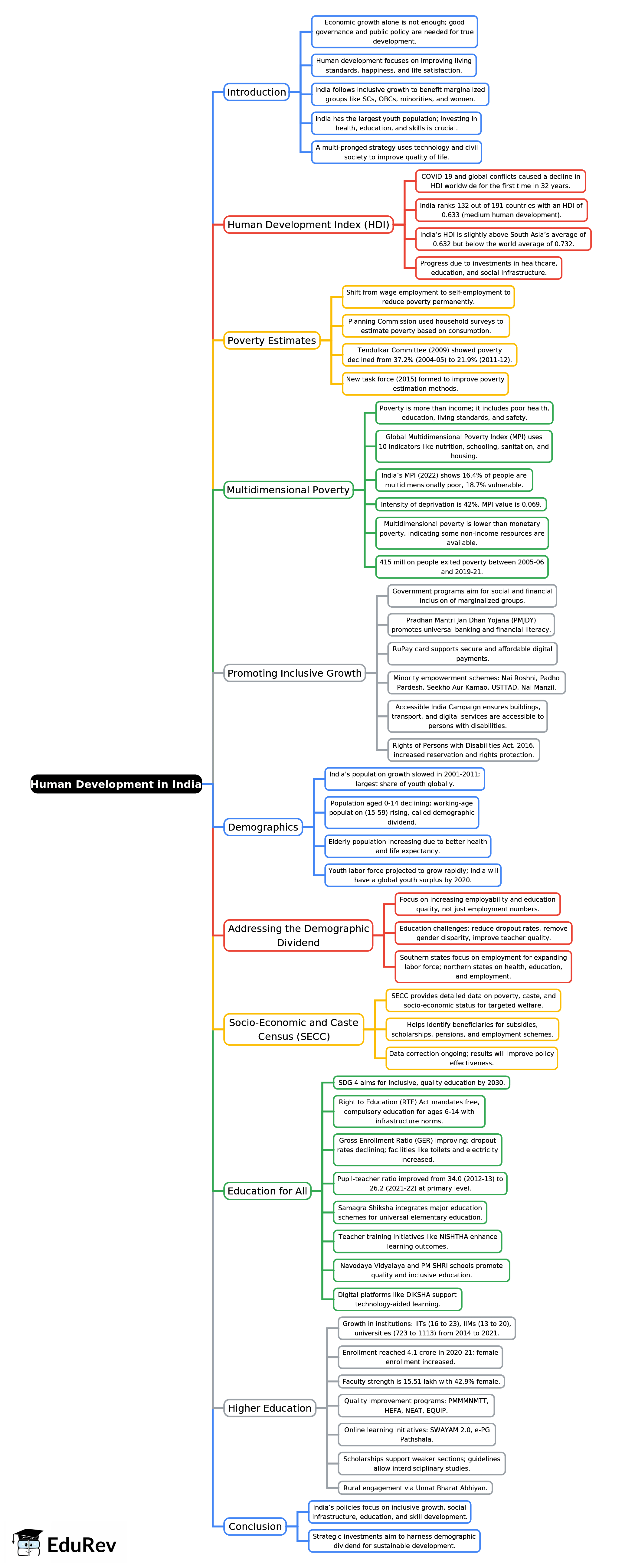UPSC Exam > UPSC Notes > Indian Economy for UPSC CSE > Mind Map: Human Development in India
Mind Map: Human Development in India | Indian Economy for UPSC CSE PDF Download
Human Development in India - 1

Human Development in India - 2

The document Mind Map: Human Development in India | Indian Economy for UPSC CSE is a part of the UPSC Course Indian Economy for UPSC CSE.
All you need of UPSC at this link: UPSC
|
138 videos|431 docs|128 tests
|
FAQs on Mind Map: Human Development in India - Indian Economy for UPSC CSE
| 1. What are the key dimensions of human development in India? |  |
Ans.Human development in India encompasses various dimensions, including health, education, and income. Health indicators include life expectancy and access to healthcare, while education metrics focus on literacy rates and enrollment ratios. Economic aspects involve income levels and employment opportunities, reflecting the overall quality of life and standard of living for individuals in the country.
| 2. How has India's human development index changed over the years? |  |
Ans.India's Human Development Index (HDI) has seen gradual improvement over the years, reflecting progress in health, education, and income levels. The increase in life expectancy, reduction in child mortality rates, and improvements in literacy rates have contributed to this positive change. However, disparities remain between different regions and social groups, necessitating targeted policies for inclusive development.
| 3. What are some major government initiatives aimed at improving human development in India? |  |
Ans.The Indian government has launched several initiatives to enhance human development, such as the National Health Mission, Sarva Shiksha Abhiyan, and the Pradhan Mantri Awas Yojana. These programs focus on improving healthcare access, ensuring quality education for all children, and providing affordable housing, respectively, aiming to uplift the living standards of marginalized communities.
| 4. How do social factors influence human development in India? |  |
Ans.Social factors, including caste, gender, and socioeconomic status, significantly influence human development outcomes in India. Marginalized groups often face barriers to education, healthcare, and employment opportunities, leading to inequalities in development. Addressing these social disparities is crucial for achieving comprehensive human development and ensuring equitable access to resources.
| 5. What role does education play in enhancing human development in India? |  |
Ans.Education plays a pivotal role in enhancing human development by equipping individuals with knowledge and skills necessary for better job opportunities and economic stability. Improved education leads to higher literacy rates, informed decision-making, and empowerment, particularly for women and disadvantaged groups, ultimately contributing to the overall development of society and the economy.
Related Searches





















